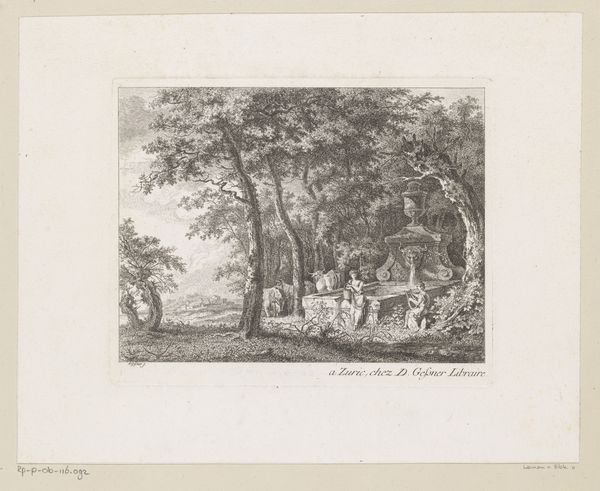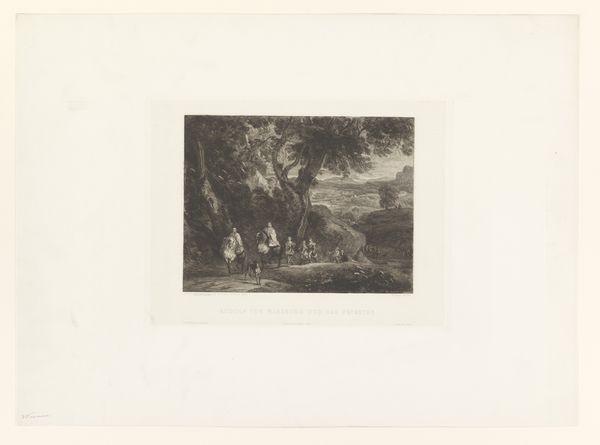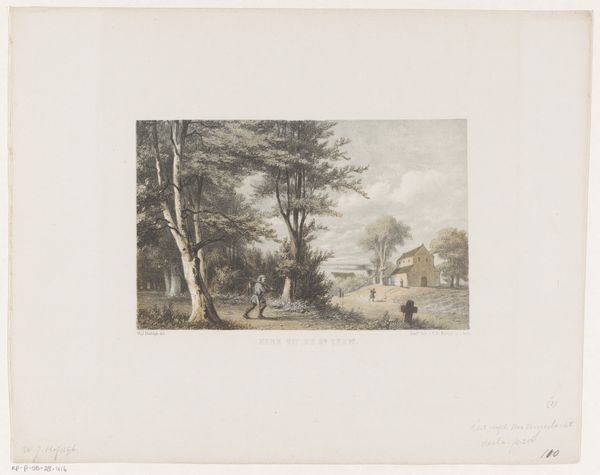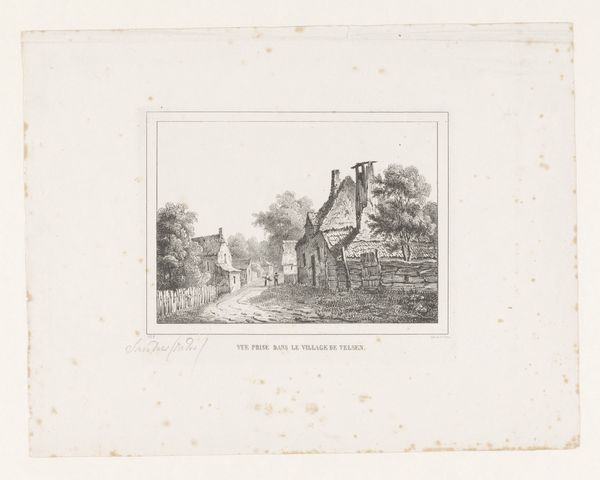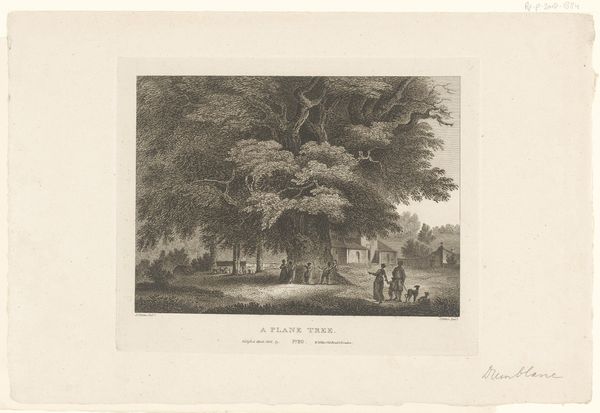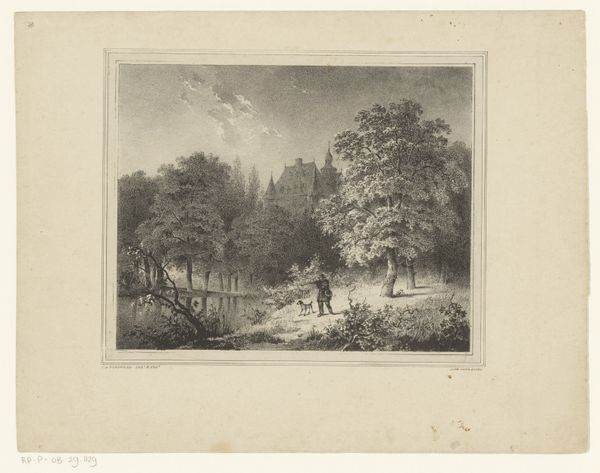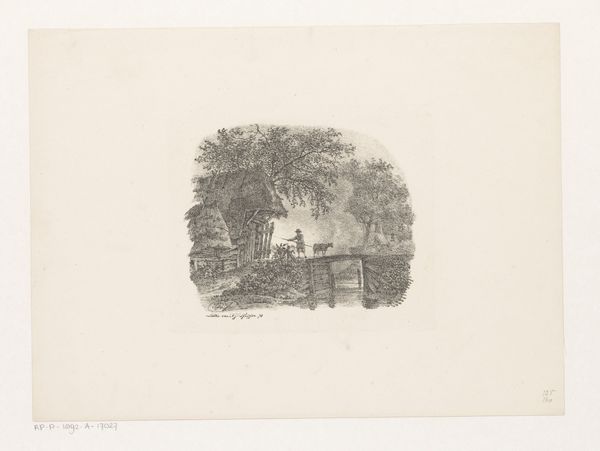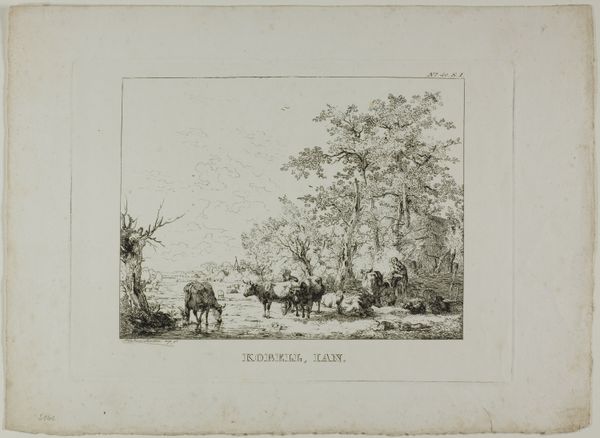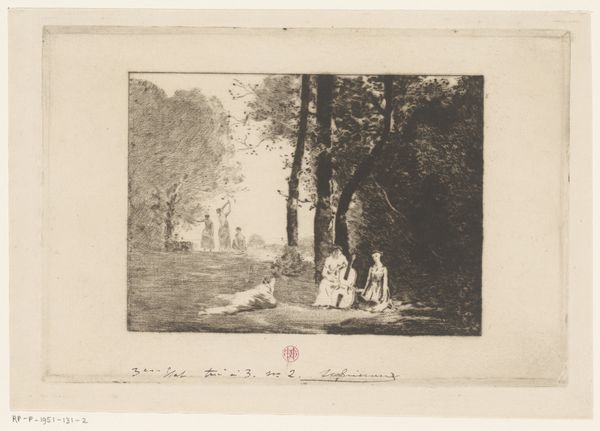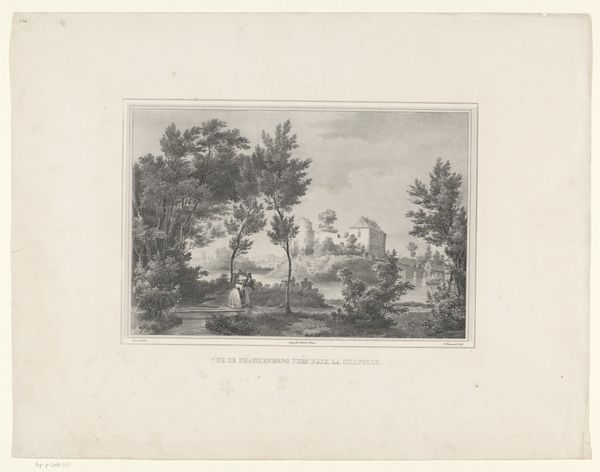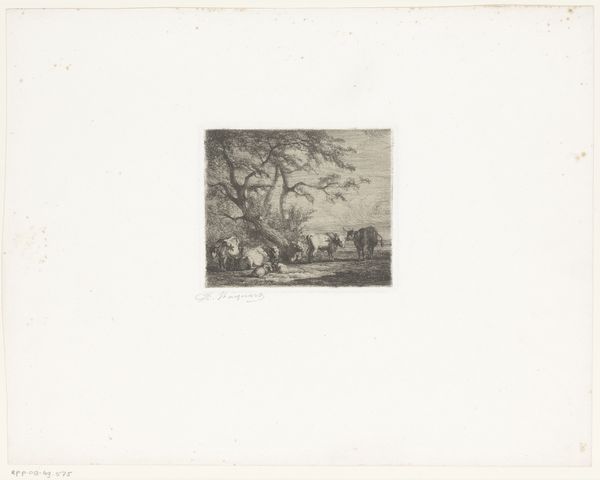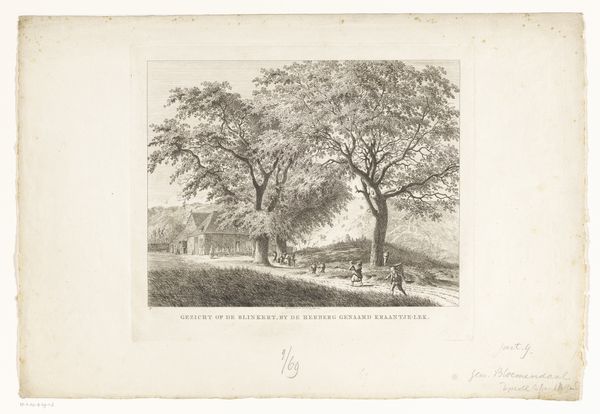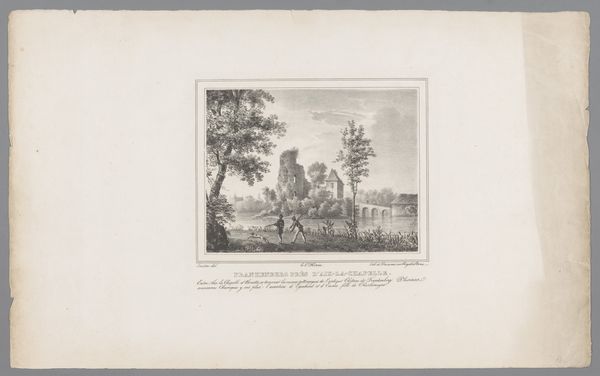
print, engraving
# print
#
landscape
#
figuration
#
genre-painting
#
history-painting
#
engraving
Dimensions: height 131 mm, width 163 mm
Copyright: Rijks Museum: Open Domain
Editor: So, here we have "Mercury and Argus," an engraving by Albert Duvivier from 1881, currently held at the Rijksmuseum. It depicts a scene with figures resting beneath a tree alongside animals. It feels almost dreamlike, quiet. What do you see in this piece, from your perspective? Curator: This engraving offers us a lens through which to examine the power dynamics embedded within classical narratives. Mercury's deception and Argus's imposed servitude resonate deeply with histories of oppression. Duvivier presents a deceptively tranquil scene, but doesn't this calm belie a struggle for power and agency? Consider Argus, forced into constant vigilance by Juno, his gaze a symbol of relentless surveillance. How might this relate to contemporary experiences of being surveilled or controlled? Editor: That’s interesting! I hadn't considered it that way. The peaceful composition initially distracted me. Curator: Precisely. It's easy to be lulled by the idyllic setting. However, when viewed through the lens of social power structures, Argus represents those whose bodies and labor are relentlessly exploited and controlled. And Mercury? What about *his* motivations in the broader historical context of class and privilege? Duvivier, though working in the 19th century, inadvertently offers a critique ripe for exploration with modern intersectional theory, don't you think? Editor: Definitely. Viewing it through the power dynamics completely reshapes my understanding of the piece. It highlights the inherent inequalities embedded in these seemingly harmless narratives. I now wonder how other classical scenes might be unpacked similarly. Curator: Exactly. It compels us to question not only the surface narrative but also the social forces at play, making us more aware of the underlying biases and structures within art, both past and present.
Comments
No comments
Be the first to comment and join the conversation on the ultimate creative platform.
